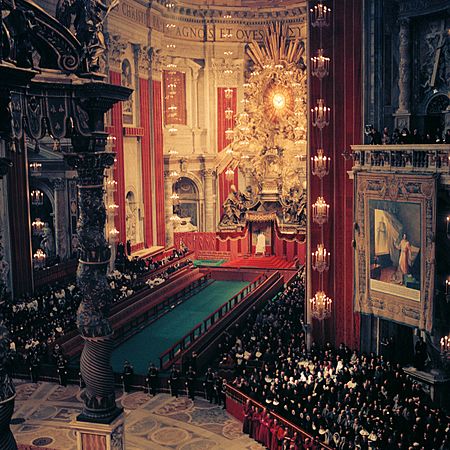The historian Roberto Mattei penned an article recently for LifeSiteNews, in which he argues that if sections of the ecumenical Council of Constance (1414-15) could be declared null and void –then so could the Second Vatican Council, “in part or en bloc”, in his own words.
We should be clear that the two councils are not the same, neither historically, nor canonically, and one should be very hesitant in comparing these two Councils, and especially in using this limited comparison to begin rejecting most or all of the Second Vatican Council, in part or in its entirety.
The Council of Constance was called in the midst of the Great Western Schism, wherein, by a complex series of events beginning with a problematical conclave in April 8th, 1378 which elected Bartolomeo Prignano as Urban VI, after the death of Pope Gregory XI on March 27th, after his triumphal return from exile in Avignon on January 17, 1377. Some declared the conclave that elected Urban invalid (there was some coercion in the election, but, as was later attested, not enough to invalidate).
We need not traverse all the details, but the sedevacantists – those who said Urban wasn’t the real Pope – held another conclave in Avignon on September 20th of that year, electing Robert of Geneva as ‘Clement VII’. Then, another group at an abortive council in Pisa on June 5th, 1409, declared this election null and void, and elected yet another ‘Pope’, Alexander V, so that we then had three men were all claiming to be Pope. Like that game show in the seventies, only one was the real Pope (the one, it turned out, stemming from the original ‘Roman’ line).
The Council was called and organized by the Emperor Sigismund, with the second Pope of the Pisan line (John XXII, after Alexander’s death in 1410) which was not all that unusual (Constantine had done the same with the first Council of Nicaea).
Here is the rub, to cut to the conciliar chase: Although a Council may be convened and even run by laymen or ordinary bishops or even an anti-Pope, only the Pope – real and canonically elected – can fulfill the third, and most essential, element in a Council, and that is confirmation, or ratification, of its decisions and teachings.
As de Mattei points out, the Council of Constance attempted to promulgate some erroneous teachings, such as the notion of mandatory councils at set time intervals, and the principle of conciliarism (that councils can be called and ratified without the Pope, and can over-rule him). But there were never ‘confirmed and ratified’ by the Pope (St. Martin V) and his successors. In fact, they were explicitly rejected.
The Second Vatican Council was a different kettle of fish: There was no schism, no problematical conclave, no emperor. An ecumenical council called by a reigning pontiff, at which were present almost all the bishops of the Catholic Church, who debated and discussed in freedom over four years, voting for each of the documents, almost all of which passed by overwhelming majorities.
In contrast to Constance, all of the ‘decisions and teachings’ of the Second Vatican Council were indeed ‘confirmed and ratified’ by the reigning Pontiff, Paul VI, without qualifications or conditions. And I will re-iterate: There is no heresy in the documents of the Council. Statements that could be rephrased and clarified, sure, but nothing that would call for repudiation, and much in the documents that is good, conservative, properly reformatory and in many ways, much needed to bring the Gospel to the modern world.
And not only that, but in rejecting the Council (an act that itself, to my mind, would be canonically impossible, without undermining the entire idea of an ecumenical council) all of the post-conciliar teaching right up to the present day – the Magisteria of Paul VI, John Paul II and Benedict XVI – also hang in the balance. All these Pontiffs saw their teachings as based upon and extending the work of the Council, as even a brief perusal will attest – were they all woefully deluded?
We would, in sum, also be rejecting the past half-century of the Church. At the very least, such would be up for grabs, and a lot more uncertain. The very edifice of the Church herself would totter.
There is no nuclear re-set option in the Catholic Church, which is a living entity, and must absorb and assimilate her own history, as it were. Rather, we must follow Pope Benedict’s call to accept and apply whatever was taught at the Council in that ‘hermeneutic of continuity’, with previous teachings, councils, the whole Tradition of the Church.
Only so can we go forward in serenity and solidity, in, and with, the mind of Christ.

